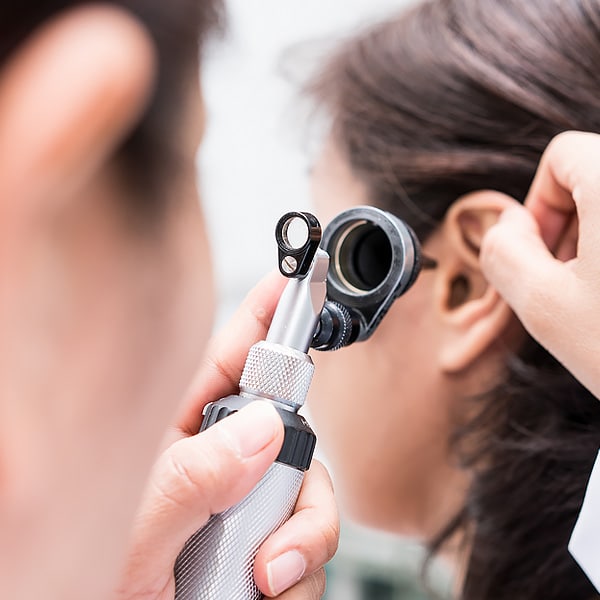While many lesions on the skin are benign (not cancerous) and may require only close monitoring, removing suspicious lesions can reduce the chance of them becoming malignant (cancerous). Most skin cancers can be completely cured with surgical removal if performed early in the course of the disease. Basal cell carcinoma, squamous cell carcinoma, and melanoma are three major types of skin cancers.
The most common skin malignancy is basal cell carcinoma (BCC). Basal cell carcinoma typically looks like a firm nodule with a waxy or scaly appearance. It is often skin-colored and can be surrounded by spider veins (aka telangectasias). BCC often has some degree of crusting or ulceration (aka crater appearance). Sun-exposed areas are the most vulnerable, and about 70% of all BCCs are found on the head and 25% on the trunk. Basal cell carcinoma invades the local tissue; and although it can cause significant destruction and even disfigurement, it rarely metastasizes to other organs. Surgical removal is the treatment of choice; but depending on the subtype, size, location, and staging, radiation, topical, photodynamic, and other therapies may be an option.
The second most common malignant skin lesion is squamous cell carcinoma (SCC). It accounts for 20% of all cutaneous skin cancers. Like basal cell carcinoma, it is typically seen in sun-exposed areas and older adults. The lower lip, earlobe, forehead, and scalp are the most common areas for SCC. It will often present as an abnormal papule, plaque, or nodule with variable degrees of the scale, crust, or ulceration. As with BCC, surgical excision is the typical treatment of choice; but other options may be available depending on other factors. Like basal cell carcinoma, SCC rarely metastasizes.
The malignant skin condition that easily metastasizes to other organ systems and can be deadly is melanoma. Melanoma is caused by cancerous melanocytes and typically presents as skin lesions that change shapes, color, size, and elevation (from flat to raised). Most are reported as moles that start to change characteristics. These lesions must be identified early and surgically removed to avoid metastasis.
Benign skin lesions, on the other hand, rarely need surgical excision unless they are a nuisance or cosmetically unappealing. The most common type of benign skin lesion is seborrheic Keratosis. These typically appear on older individuals, are scaly, darker (hyperpigmented), and often appear to be stuck onto the skin surface. Other benign skin lesions include neurofibromas which are soft skin-colored raised lesions, skin tags, nevi (aka moles), cherry angiomas, and lentigine (aka liver spots). Although they may not need further treatment, most benign skin lesions may need to biopsied to confirm that they are not malignant or precancerous.
